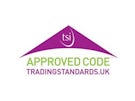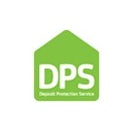Maintenance made easy – a step-by-step guide from the experts at Belvoir
Whether your rental property is old or new, large or small, a city dwelling or a coastal retreat, monitoring maintenance issues is vital.
“It’s extremely important to pro-actively look out for potential maintenance issues in your rental property in order to detect problems at the early stages before they cause more extensive damage,” explains proprietor of Belvoir Warrington Gary Pemberton. “This could be something as small as a water leak, or an issue as big as structural movement in a property.”
Proprietor of Belvoir Southend-on-Sea Wayne Mearns agrees. “Identifying potential maintenance issues early can save hundreds of pounds on what could end up being a larger repair bill later on,” he says. “In addition, your tenants will see that you care about the property and will feel more obliged to look after it during their stay.”
Essential inspections
Arranging regular inspections of your rental property is the key to spotting potential maintenance issues before they escalate.
“You should visit your property every six months (at a minimum) in order to access potential maintenance needs,” advises Gary. “Your tenant has a duty of care to inform you of anything that they may have spotted. However, I would not recommend solely relying on a tenant – they may not be familiar with the warning signs of potential repairs or maintenance issues and may miss something essential. Always visit the property yourself, or ask your agent to visit the property on your behalf, every three to six months.”
Proprietor of Belvoir Portsmouth Samantha Bateman explains further…
“We inspect our properties at regular intervals throughout the year so that we can check them in every season. For example, a problem with the guttering, roof or rendering will often not show itself until the wetter months.
“Tenants who work full-time may not remember, or find the time, to report an issue to us,” she continues. “In their opinion the problem may be minor, but as experts we know that small issues may manifest themselves into bigger repairs or renovation if left without immediate attention.”
Visiting rights
When visiting a property it is essential to give your tenant at least 24 hours notice, but appointments are usually made at least a week in advance.
“Our tenancy agreements state that a tenant should allow access to the landlord or his agent if they are given at least 24 hours notice and we would normally call the tenant to arrange a convenient time for both parties to carry out the inspection,” says Gary. “If we are struggling to contact the tenant, we would then write to inform them that we will be entering the property with our keys and this would give them at least 24 hours notice.”
Samantha agrees. “We write to our tenants four weeks prior to any inspection which gives them time to arrange time off work if necessary. If they are not going to be present during the inspection, and they would prefer to leave us a note outlining anything they would like us to look at while there, then that is fine too.
“After the inspection the tenant is notified of any maintenance work we organise in order to arrange access prior to any works being completed. We try to arrange maintenance at the convenience of the tenant unless it is an emergency.”
Wayne adds, “24hrs is the minimum notice required unless it’s an emergency and then it’s via the tenant as urgent. If the works are particularly disruptive then it’s worth letting the tenant know exactly how bad the disruption could be so there are no surprises. Consider a rent reduction in some cases for the length of the works if parts of the property are unusable.”
Common issues
During your inspection there are many common potential maintenance issues to be aware of…
“While at the property look out for the following,” says Wayne. “Check that window and door seals are in working order, ensure the radiators aren’t leaking, check taps for drips and take note of any stains on ceilings which could indicate leaks from pipes or the roof. Step outside and pay attention to loose roof tiles and examine the guttering too – blocked guttering is often a hidden problem that can cause damp and other issues.”
Gary adds, “Making a checklist prior to the inspection can be useful. Make a list of everything you should be looking at on a quarterly, annual and five-year basis and tick off as appropriate. During the inspection look at the interior and exterior fabric of your property as well as the fixtures and fittings, plus open loft hatches to check attic spaces and examine basement and cellars if appropriate.
“While there are many maintenance issues to look out for the most common problems tend to be leaks on radiators, deterioration of bathroom seals, damp, mould and condensation.”
Samantha says that condensation is one of the most common, yet easily resolved, maintenance issues landlords often face. She explains further…
“By far the most common maintenance issue we find is condensation,” she says. “We encourage all landlords to install moisture sensitive fans in the bathroom and kitchen to try to combat the problem. We also find speaking with the tenants and advising them how to manage the situation is an effective remedy
“When left untreated condensation can cause staining and damage to the walls and decor of the property.”
Ignore now, pay later
If maintenance concerns aren’t resolved when detected small issues can become big problems…
“If these issues aren’t repaired within a short amount of time, they can cause substantial damage to the property and, in the case of the damp, can cause your tenant health problems too,” warns Gary.
Inspect your rental property regularly and stop the acceleration of maintenance problems before they start.
“The key is to spot problems early and deal with them before they become bigger issues,” concludes proprietor of Belvoir Brighton and Hove Chris Radford. “We do our inspections every quarter and produce written reports for our landlords.
“Small problems left unresolved will undoubtedly get worse, costing you more money, taking contractor’s more time and leading to more disruption for your tenant in order to rectify them.”
Maintenance monitoring – an at-a-glance checklist
√ Water leaks
√ Structural movement in the property
√ Damp
√ Mould
√ Cracked or discoloured electrical sockets
√ Damage to moving items, such as toilet handles and doorknobs
√ Condensation
√ Peeling paintwork
√ Wall cracks
√ Crumbling brickwork
√ Leaking taps
√ Blocked drains
√ Heating/hot water problems
√ Loose roof tiles
√ Deteriorating pointing
√ Stains to ceilings
√ Blocked guttering
√ Pest or insect infestations
√ Water damage
√ Broken fencing
√ Erosion of shower and bath seals
√ Deterioration of window and door seals
√ Cracks in the exterior brickwork or rendering
√ Cracked chimney stacks
√ Malfunctioning appliances, such as washing machines, fridges, cookers, and showers etc.
• Belvoir now has more than 160 offices nationwide. To find your nearest Belvoir office, visit www.belvoir.co.uk











